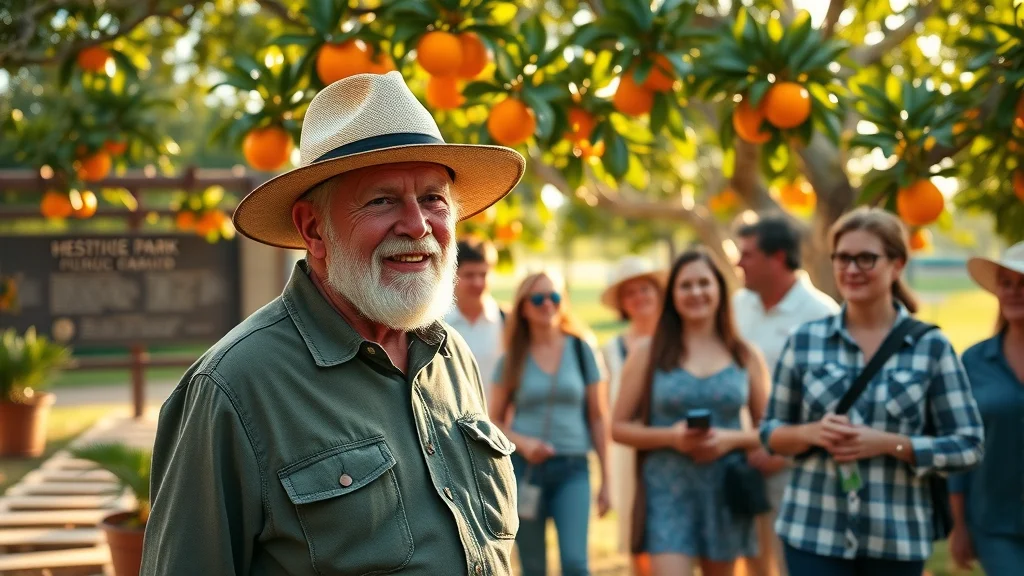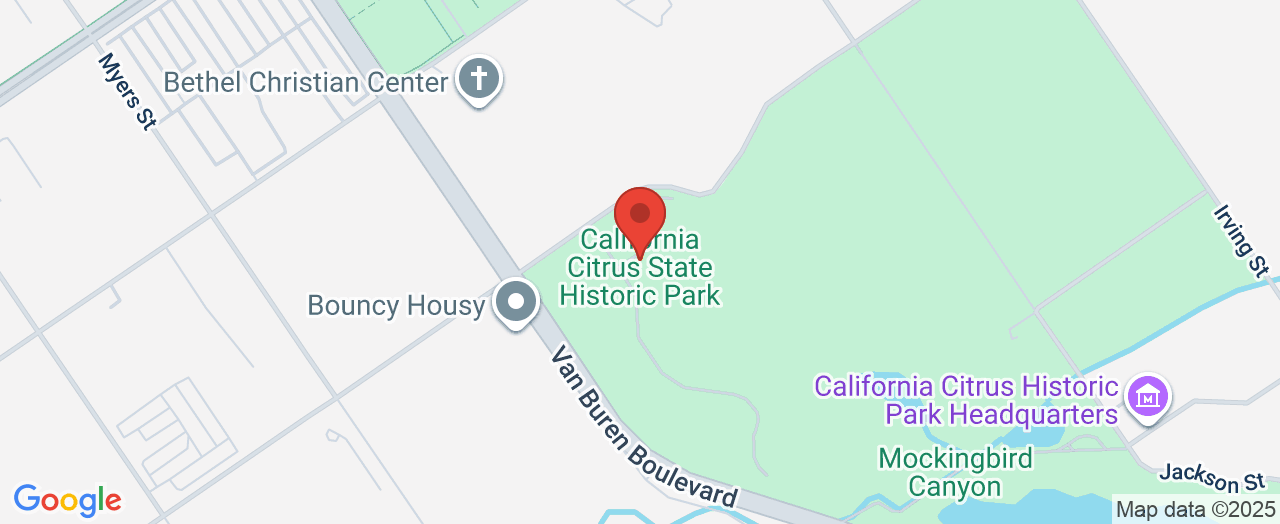Unlocking California’s Living History: Why Citrus Grove Tours Fascinate Visitors of All Ages
Imagine standing amid rows of fragrant fruit trees, sunlight shimmering through their glossy leaves, and the sweet scent of oranges drifting on a warm breeze. For many, visiting an orchard is a nostalgic, almost cinematic experience—but there’s much more beneath the surface. Citrus grove tours offer a unique chance to explore the roots of California’s agricultural legacy, revealing stories of migration, innovation, and community that continue to shape the Golden State today.
Citrus groves were pivotal in California’s growth, fueling both economic expansion and cultural transformation. Today, exploring these groves is about more than savoring a fresh orange: it’s about connecting with the environment, understanding challenges like climate change, and appreciating the resilience of communities tied to the land. As interest in sustainable travel and agritourism grows, the appeal of citrus grove tours is at an all-time high. For those curious about nature, history, or the simple pleasures of outdoor recreation, delving into the citrus story is an experience not to be missed.
Beyond the Orchard: Understanding Citrus Grove Tours and Their Enduring Appeal
Citrus grove tours are immersive journeys through working or historic orange, lemon, and grapefruit orchards—living museums where visitors can experience the sights, smells, and stories of California’s citrus heritage. These guided walks or rides often include educational segments on horticulture, sessions on sustainable farming, and glimpses into the everyday life of growers. Beyond the obvious beauty, such tours are windows into the social, scientific, and cultural forces that shaped communities and landscapes across the state.

Missing out on the opportunity to join a citrus grove tour means more than skipping a scenic walk; it means overlooking a vital chapter of California’s identity. Those who take these journeys become participants in a multilayered story—one that weaves together economic booms, environmental stewardship, and shared traditions. In an era when many are distanced from the source of their food and the communities that nurture it, citrus grove tours foster reconnection, offering practical lessons in conservation, adaptation, and the value of public land. There’s a tangible risk to ignoring or underestimating these narratives: we lose touch with our roots while navigating an often uncertain environmental future.
Why Citrus Grove Tours Matter: Education, Inspiration, and Real-World Connection
California Citrus State Historic Park exemplifies how citrus grove tours unlock learning, inspiration, and personal transformation. The park’s mission to “provide for the health, inspiration and education” of Californians is brought alive under the green canopies of fruitful trees. Visitors don’t just gaze at citrus trees—they become part of a living history, absorbing lessons about biodiversity, stewardship, and the crucial role that agriculture played in shaping local communities.
Real-world benefits ripple far beyond the groves themselves. These tours provide quality outdoor recreation that feeds both the mind and spirit, encouraging people of all ages to rediscover the joy of hands-on learning in nature. They illuminate the interconnectedness of biological diversity and cultural heritage, making conservation and historical empathy tangible. Increased access to spaces like these has profound implications: from inspiring future scientists and conservationists to invigorating local economies through sustainable tourism. By experiencing citrus grove tours firsthand, participants become stewards in their own right—equipped with the knowledge and passion to protect treasured landscapes for generations to come.

From Gold Rush Dreams to Living Landscapes: The Story Behind California’s Citrus Groves
The tale of California’s citrus groves is entwined with the broader sweep of American history. Following the Gold Rush, settlers quickly discovered that the state's fertile valleys and Mediterranean climate were perfect for cultivating citrus. Oranges became symbols of hope and prosperity, their bright fruit luring new waves of immigrants and entrepreneurs dreaming of success in the West. As orchards multiplied, towns like Riverside blossomed, quickly establishing themselves as epicenters of the “Second Gold Rush” for their lucrative citrus harvests.
Today, citrus grove tours allow visitors to walk in the footsteps of these pioneers, exploring the ways in which agriculture, migration, and innovation transformed California’s economy and culture. Historic sites like California Citrus State Historic Park preserve not only trees, but also vital chapters of social and scientific progress. Guided tours, educational exhibits, and seasonal festivals draw connections between past and present, showing how families, communities, and their environments have adapted to evolving challenges while maintaining cherished traditions.
Nature as Classroom: Outdoor Recreation and Learning for Every Generation
In an increasingly digital world, citrus grove tours offer a powerful antidote to screen fatigue and routine. Parks like California Citrus State Historic Park are intentionally designed to serve the inspiration, education, and health of every visitor—adults, children, and families alike. By blending outdoor recreation with hands-on learning, these tours make natural and cultural history come alive, engaging guests in sensory experiences that linger long after their visit.

Visitors can traverse paved trails beneath vibrant canopies, participate in interactive interpretive programs, and discover the role of citrus in global trade and local identity. For families, the experience doubles as a chance to teach environmental awareness and cultural appreciation in one memorable outing. Whether they come for a picnic, a festival, or a deep dive into California’s agricultural roots, guests leave with new insights and a greater commitment to the stewardship of shared public lands.
Innovation and Adaptation: Citrus Heritage in the Face of Climate Change
California’s citrus groves carry lessons not only of abundance and celebration, but also of challenge and resilience. Drought, wildfires, and changing weather threaten both the fruit and the communities that depend on it. State parks—and the citrus tours they provide—have emerged as living laboratories for adaptation, modeling sustainable agriculture and land management for the modern era.
From interpretive programs addressing environmental pressures to events and annual contests celebrating creative engagement with nature, these groves invite guests to reflect on their role in shaping a more sustainable future. By exploring the intersection of tradition and innovation, visitors gain both hope and practical knowledge—tools essential for fostering resilience in their own communities.
California Citrus State Historic Park: A Thought Leader in Recreation and Preservation

The California Citrus State Historic Park stands out for its mission-driven approach, combining education, preservation, and inclusive outdoor recreation. The park’s philosophy centers on celebrating California’s “extraordinary biological diversity” while protecting its most valued natural and cultural resources. With programs and events designed to engage a diverse and growing population, the park is committed to increasing access and making sure everyone—regardless of age or background—can enjoy the wonders of California’s citrus heritage.
Central to their method is the blending of living history and cutting-edge engagement, from interpretive walking tours to special community events that highlight cultural contributions and environmental stewardship. The park’s ongoing work to “expand outdoor recreation offerings” and adapt to a changing landscape—through resilience-focused education and sustainability initiatives—positions it as an industry leader in public recreation, conservation, and heritage interpretation. By inviting the public into this story, the park ensures that the lessons and joys of citrus grove tours remain a vital part of California’s future.
The Power of Experience: What Visitors Share After Taking Citrus Grove Tours
For many, the impact of citrus grove tours is best explained by those who have tried them. Authentic feedback from real visitors captures the blend of beauty, education, and enjoyment these experiences provide. One recent visitor described an afternoon spent at California Citrus State Historic Park, where curiosity and learning came together in a uniquely memorable way:
Cool state park experience, especially for kids. $3 for hourly parking, $7 for the day- be sure to have cash. The museum/visitor center is well-done and educational. The park is large with lots of areas to explore. They do offer free guided tours, but we just missed them. Definitely worth a visit!
Encounters like these show that citrus grove tours aren’t just informative—they’re deeply enjoyable and accessible to families, history enthusiasts, and casual explorers alike. The positive experiences of those who visit are a powerful testament to the success of the park’s educational mission and a compelling reason for others to discover the value—and beauty—of connecting with California’s unique citrus heritage firsthand.
Why Citrus Grove Tours Are a Must for Your California Adventure
In a state shaped by migration, innovation, and passionate preservation, citrus grove tours tell a story of resilience, beauty, and connection. They bring history to life outdoors, empower guests to take part in environmental stewardship, and foster a deeper appreciation for both nature and culture. California Citrus State Historic Park stands as a leader in this movement, offering expertly crafted programs that connect people with past, present, and future. Whether you seek inspiration, education, or a simply unforgettable outing, citrus grove tours offer something lasting—making them an essential part of experiencing the Golden State.
Ultimately, exploring citrus groves creates not only memories, but also a renewed commitment to the land and its stories. As more people seek authentic, meaningful travel experiences, citrus grove tours promise both enjoyment and enlightenment—planting seeds of awareness and stewardship with every visit.
Contact the Experts at California Citrus State Historic Park
If you’d like to learn more about how citrus grove tours could benefit your adventure or education, contact the team at California Citrus State Historic Park.
📍 Address: 9400 Dufferin Ave, Riverside, CA 92503, USA
📞 Phone: +1 951-780-6222
🌐 Website: http://www.parks.ca.gov/
California Citrus State Historic Park Location and Hours
🕒 Hours of Operation:
📅 Monday: 8:00 AM – 5:00 PM
📅 Tuesday: 8:00 AM – 5:00 PM
📅 Wednesday: 8:00 AM – 5:00 PM
📅 Thursday: 8:00 AM – 5:00 PM
📅 Friday: 8:00 AM – 5:00 PM
📅 Saturday: 8:00 AM – 7:00 PM
📅 Sunday: 8:00 AM – 7:00 PM

 Add Row
Add Row  Add
Add 





Write A Comment